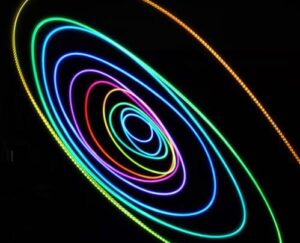Laser modules are applied in various industrial spheres due to the broad spectrum of produced wavelengths. High-power fiber laser systems are commonly used for welding, marking, cutting, etc. Low-power but more precise fiber lasers fit for applications where there is a need for high accuracy, for example, for science and medicine.
This article is dedicated to the two applications of low-power fiber laser modules such as laser pumping and optical trapping.
Most common advantages of the laser modules
Laser diodes are applied in optical pumping of fiber lasers and DPSS. They are proved to be extremely effective, robust and compact in the laser industry. What is more important, laser modules provide high peak energy and stable laser beam quality. Let’s see all these advantages in detail:
- The idea of photons’ limiting in rare earth-doped fiber gives fiber lasers priority over the other laser types. That is stability. Since a fiber laser generates the beam within the core, there is no need for complex or sensitive optical equipment. At the same time in a usual laser there is an optical fiber for laser beam regulation. Otherwise, optical fiber is applied for the mirror reflection. Both these operation principles constantly require highly accurate adjustment by the specialist every time they fail. Unlike conventional lasers, fiber lasers don’t have such a high level of sensitivity to the movements and shocks, keeping the operation stability the same.
- To provide the straight and high-quality laser beam, there is a limitation by the doped fiber core. As a result, the focusing made by the laser beam is more accurate and effective.
- Energy efficiency is the other strength that fiber lasers have. They can transfer almost all the input they get into the beam. Therefore, the limitation of energy amounts reduces the conversion to thermal energy. That makes fiber better thermally protected and immune to degradation.
- Nowadays, the majority of laser sources have water-cooled operating systems. In contrast to them, fiber lasers use air cooling technology to take the heat out of the laser. This fact lets specialists solve the portability and power consumption issues. The specialists have developed the most effective cooling systems based on the heat dissipation calculations for different parts and a number of comprehensive studies of thermal loading. Due to the modern chilling systems, thermal dissipation of the fiber lasers with the air cooling technology is proved to be a highly effective method in mitigation of the thermal effects.
- Fiber laser systems with 1 – 100 W output power ranges offer a wide choice of different wavelengths.
Fiber laser systems in optical pumping
Optical pumping of a certain laser medium is its illumination by an external light source in order to transfer it to an excited electronic state, the entire environment or its components. Fiber lasers, as all fiber laser systems, need an excitation source to pump energy into the system.
Nowadays, the most common forms of optical pumping include semiconductor lasers (laser diodes), solid-state, or fiber lasers. Solid-state and fiber lasers are pumped with laser diodes.
Laser pumping can be made in two methods: continuous or pulsed modes. The key distinction between these types is the delivery method of laser pumping source which is connected to fiber core and then fused into a double clad fiber. This double clad fiber is alloyed with certain material for the particular laser module. According to the applied material, the absorption band can be wide or narrow. It means that there can be applied conventional laser diodes, or wavelength stabilized diodes in some cases.
Fiber laser modules in optical trapping
Optical trapping is a scientific instrument applying a focused laser beam to hold and manipulate microscopic objects. Mostly this technology is effectively used in biomedical studies.
Thanks to the ability to work with nanoparticles, optical trapping can study the single molecules. That’s why progress in optical trapping has greatly helped in research of DNA properties and associated proteins.
Most of the optical trap systems employ laser modules with the 1 μm wavelength. For them, these lasers are necessary because their chances of biological material’s damage are lower. Such wavelength is optimal for aqueous biological specimens with a low absorption coefficient.
With both these instrument types scientists apply laser modules in modern micro- and nanotechnology. The efficiency of optical trapping and optical pumping has brought new opportunities to science.
Optromix Inc., headquartered in Newton, MA, USA, is a manufacturer of laser technologies, optical fiber sensors, and optical monitoring systems. We develop and manufacture a broad variety of Fiber lasers, СО2 lasers, Ti: Sapphire lasers, Dye lasers, and Excimer Lasers. We offer simple Erbium laser and Ytterbium laser products, as well as sophisticated laser systems with unique characteristics, based on the client’s inquiry.
We manufacture laser modules using our technologies based on the advanced research work and patents of the international R&D team. Laser processes are high-quality, high-precision, easily automated manufacturing solutions that provide repeatability and flexibility.
If you are interested in Optromix fiber laser systems or Optromix CO2 lasers, please contact us at info@optromix.com







 Nowadays,
Nowadays,  According to specialists, the
According to specialists, the  The U.S. Army is holding final tests with the high-energy
The U.S. Army is holding final tests with the high-energy